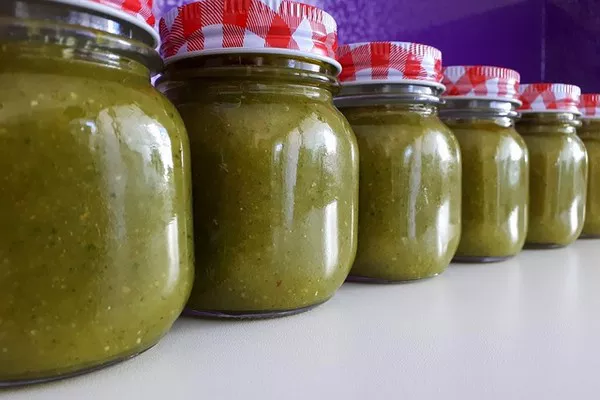Basil, a beloved herb known for its aromatic leaves and culinary versatility, has been cherished by gardeners and chefs alike for centuries. With its pleasant fragrance and distinctive flavor, basil has earned a place in gardens, kitchens, and herbal medicine practices around the world. Yet, the lifespan of basil plants often raises questions among enthusiasts. How long can a basil plant truly thrive? In this article, we delve into the factors that influence the lifespan of basil plants, tips for extending their vitality, and the role they play beyond the culinary realm.
Understanding the Basil Plant’s Lifecycle
Basil (Ocimum basilicum) is an annual herb, which means that it completes its lifecycle within a single year. This lifecycle consists of four main stages: germination, vegetative growth, flowering, and seed production. Understanding these stages is crucial for comprehending the overall lifespan of basil plants.
Germination: This marks the beginning of a basil plant’s life. Basil seeds germinate in about 5 to 10 days under favorable conditions. During this stage, the seed develops into a seedling, which then progresses to the vegetative growth phase.
Vegetative Growth: This is the most crucial phase for basil plants. During vegetative growth, the plant focuses on building a strong root system and producing lush foliage. Under optimal conditions, basil can grow rapidly, reaching a height of around 1 to 2 feet. Regular pruning during this stage encourages bushier growth and enhances the plant’s overall health.
Flowering: As the basil plant matures, it transitions to the flowering stage. Flowering is a sign that the plant is nearing the end of its lifecycle. During this phase, the energy that was previously directed toward foliage growth is redirected toward producing flowers and seeds.
Seed Production: The basil plant’s ultimate goal is to reproduce by producing seeds. Once the flowers have been pollinated, they develop into seed capsules. These capsules contain the basil seeds that can be harvested and stored for future planting.
Factors Influencing Basil Plant Lifespan
Several factors play a role in determining how long a basil plant can live and thrive:
Growing Conditions: Basil thrives in warm, sunny conditions with well-draining soil. Proper soil moisture and air circulation are essential for preventing diseases that can shorten the plant’s lifespan.
Pruning: Regularly pruning basil plants during their vegetative growth stage can extend their lifespan. Pinching off the tips of the stems promotes bushier growth, delays flowering, and encourages a longer harvest period.
Harvesting: Harvesting leaves from the top of the plant, just above a pair of leaves, prevents the plant from putting energy into flowering and seed production. This practice can prolong the basil plant’s life by several weeks.
Temperature: Basil is sensitive to cold temperatures and frost. It is important to plant basil after the danger of frost has passed and to protect it from sudden temperature drops.
Pests and Diseases: Pests like aphids and diseases like downy mildew can weaken basil plants and reduce their lifespan. Regular monitoring and prompt action can help mitigate these issues.
Variety: Different basil varieties have varying lifespans. Some varieties, like Genovese basil, tend to focus more on leaf production before flowering, while others, like Thai basil, may start flowering earlier in their growth cycle.
Extending the Lifespan of Basil Plants
While basil is an annual herb and has a predetermined lifecycle, there are strategies gardeners can employ to maximize the plant’s vitality and harvest window:
Succession Planting: To ensure a continuous supply of fresh basil, consider succession planting. This involves planting new basil seeds every few weeks. As older plants start to flower and set seeds, the younger plants will continue to grow and produce foliage.
Indoor Cultivation: Growing basil indoors in containers allows for greater control over environmental conditions. Indoor plants are less susceptible to pests and diseases, and they can be grown year-round, extending the availability of fresh basil.
Pinching and Pruning: Regularly pinch off the tops of the stems to prevent premature flowering. Pruning also encourages lateral growth, resulting in a bushier plant.
Fertilization: Providing appropriate nutrients through balanced fertilization can enhance the plant’s growth and overall health. However, avoid excessive fertilization, as it can lead to excessive foliage growth at the expense of flavor.
Harvesting Techniques: Harvesting basil leaves regularly promotes new growth and delays flowering. Use sharp scissors or pruning shears to avoid damaging the plant.
Basil Beyond the Plate
While basil is primarily known for its culinary applications, its significance extends beyond the realm of cooking:
Medicinal Uses: Basil has been used in traditional medicine for its potential antibacterial, anti-inflammatory, and antioxidant properties. Extracts from basil leaves have been explored for their potential health benefits.
Cultural Symbolism: Basil holds cultural and religious significance in various traditions. It is associated with symbolism related to love, protection, and spirituality in different cultures around the world.
Aesthetic Value: With its lush green leaves and distinct aroma, basil can serve as an ornamental plant in gardens, balconies, and windowsills, adding beauty to indoor and outdoor spaces.
Conclusion
The lifespan of a basil plant is inherently tied to its annual lifecycle, which consists of germination, vegetative growth, flowering, and seed production. By understanding the factors that influence a basil plant’s lifespan and employing effective gardening techniques, enthusiasts can extend the vitality of their basil plants beyond the usual growing season. While basil’s primary role is as a culinary herb, its significance resonates in various cultural, medicinal, and aesthetic domains, making it a cherished plant in diverse contexts.


